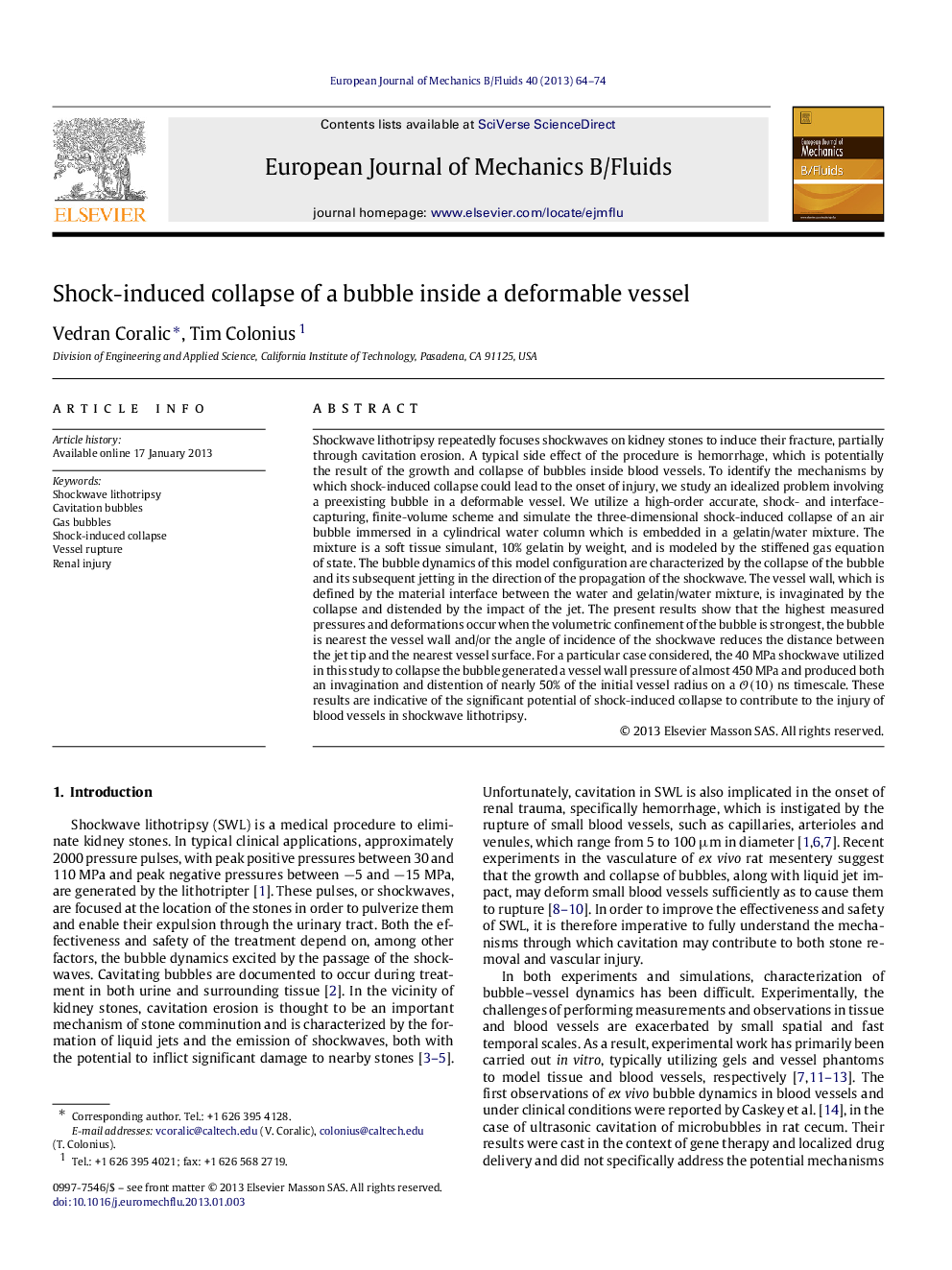| Article ID | Journal | Published Year | Pages | File Type |
|---|---|---|---|---|
| 650479 | European Journal of Mechanics - B/Fluids | 2013 | 11 Pages |
Abstract
Shockwave lithotripsy repeatedly focuses shockwaves on kidney stones to induce their fracture, partially through cavitation erosion. A typical side effect of the procedure is hemorrhage, which is potentially the result of the growth and collapse of bubbles inside blood vessels. To identify the mechanisms by which shock-induced collapse could lead to the onset of injury, we study an idealized problem involving a preexisting bubble in a deformable vessel. We utilize a high-order accurate, shock- and interface-capturing, finite-volume scheme and simulate the three-dimensional shock-induced collapse of an air bubble immersed in a cylindrical water column which is embedded in a gelatin/water mixture. The mixture is a soft tissue simulant, 10% gelatin by weight, and is modeled by the stiffened gas equation of state. The bubble dynamics of this model configuration are characterized by the collapse of the bubble and its subsequent jetting in the direction of the propagation of the shockwave. The vessel wall, which is defined by the material interface between the water and gelatin/water mixture, is invaginated by the collapse and distended by the impact of the jet. The present results show that the highest measured pressures and deformations occur when the volumetric confinement of the bubble is strongest, the bubble is nearest the vessel wall and/or the angle of incidence of the shockwave reduces the distance between the jet tip and the nearest vessel surface. For a particular case considered, the 40Â MPa shockwave utilized in this study to collapse the bubble generated a vessel wall pressure of almost 450Â MPa and produced both an invagination and distention of nearly 50% of the initial vessel radius on a O(10) ns timescale. These results are indicative of the significant potential of shock-induced collapse to contribute to the injury of blood vessels in shockwave lithotripsy.
Related Topics
Physical Sciences and Engineering
Chemical Engineering
Fluid Flow and Transfer Processes
Authors
Vedran Coralic, Tim Colonius,
